Guest Post on Resource Guarding: Part 2
We are so grateful for our dear friends, Bud and Alice Roberts, to guest write another blog post for us on resource guarding.
You can read Part 1 here!
As they’ll explain below, Bud and Alice have many years of experience in the dog training world, including in Bud’s military career and in their spare time working with rescues. Their wisdom is invaluable to us, and truly, we trust them implicitly with any training questions we come across. This post was mainly to help people know what kind of training to do early on in puppyhood to prevent resource guarding from ever developing. While Labradors are not a breed that tend to have any aggressiveness, any breed is capable of developing resource guarding tendencies under the right set of circumstances. It’s instinctual to them as a species.
When talking with Bud about doing this post for us he noted to me, “keep in mind most resource guarding comes from mistakes made by people when the dog was a young puppy. The key time period is 12-16 weeks.”
So with that in mind, here are some incredibly valuable notes regarding resource guarding prevention and training…
Resource Guarding
As an introduction I have trained dogs for over 40 years, principally dogs in shelters and rescues who were abused – neglected or used in dog fighting rings either as fighters or as bait dogs about 1,500+. Almost all these dogs had serious behavior issues and understandably resource guarding was one of these unwanted behaviors. I will attempt to give some advice here from my experiences in both how to prevent it altogether in a puppy or once it is started as an adult. Just as an aside I know these things work as we can do anything we want to our two Endless Mountain Labradors at any time we want. We seldom do this except to show clients when we did train that the level of trust can be established and our dogs know they will get something, even if it is only praise as this is the most important thing to them, although a small treat is important as well.
One must keep in mind that resource guarding is a pretty instinctive behavior in many dogs, it is part of their DNA. This is reinforced if they come from a shelter, rescue or multi dog hoarding situation where they had to protect their food or prized toy.
Let us start with puppies which is basically the best place to start IF you have the opportunity with a puppy, you have just adopted.
The most important thing one must do is secure the puppy’s trust. Keep in mind you have gone to a breeder, selected your puppy, everyone is rightfully excited, and you bring the pup home and want to hold and play. Great, BUT – start training on day two. Start with the sit command and online you can find multiple techniques to get this started, my favorite is pass food over the dog’s head front to back and as the dog sits, say sit and reward. This could easily be your go to command and if he gets it, you start all training with this SIT and end all sessions with SIT. LOTS and LOTS of praise. Then one moves on to others like down, wait, stay etc. But, lets cover resource guarding. Feed your puppy twice or three times a day, depending on what your breeder or the rescue recommends. Feed in the same quiet place each time. Place the food down and now is a time to start the SIT and then WAIT so the dog learns to not get overly pushy. Put the food down and walk away. Do not touch the food or the bowl until the dog is done, however, do walk by and drop in a favorite treat or piece of chicken etc. As the dog acknowledges your treat, gradually over time move closer and closer. Never put your hands in the bowl or take the food, it is rude and could teach the dog to try and guard the food. What you want is for the puppy to trust you and everyone else in the home. By dropping treats and getting closer and closer the puppy will learn that “hey these humans are ok” and accept someone near the food without feeling threatened. Resource guarding usually stems from anxiety in the puppy. Follow the simple outline above and you should be fine, it takes time. A week or so of walking by, a week or so a few feet away and then a week or so next to the bowl. Each time the dog accepts you being there, verbal praise, do not touch the puppy or the bowl. You are building TRUST and from this trust all training is easier and much more fun. As an aside if you are in a rush or a bad mood, skip this exercise as the puppy will sense your instability and not “get” the training exercise you are going through. IF for some reason your puppy does resource guard, call an expert training who uses positive reinforcement to work thru this, but in a puppy, I have found it very rare, what you are trying to do is build trust and PREVENT future resource guarding.
Now on to the more difficult and potentially dangerous situation of an older dog who has developed resource guarding of either food or toys and, in most cases, a particular toy.
So, as with a puppy in most cases it is an anxiety thing and it can be a learned behavior. So, we need to re-train the dog out of this “protection and no trust” mind set and grow from there.
Adult dog resource guarding is most common in dogs from rescue or shelter situations, but can come on from one you have raised from a puppy. One must keep in mind that dogs, no matter how wonderful, no matter how sweet the dog is, he or she is an animal and has animal instincts different than ours as a human. If a dog is treated as a child as a sibling and done so in the wrong manner the dog can develop a protective nature either for itself, items, or another person in the home. So, as a puppy NO ROUGH play, I do not even advocate things like tug of war. If you do play this “game” watch your dog’s pupils, as the game moves on in a few seconds or minutes the dog’s pupils will get much larger indicating he/she is moving into a fight mode and is “guarding” the pull toy. Just do not do it, there are many other ways to play with a dog that are positive and productive. I have taught that training of any kind is a game. Watch a video of the K9 military or police training – it is all fun and games for the dog and the reward is either a treat but more often a favorite toy, ball, or Kong, and that is what they get once in the field and working as the end of the mission reward. I recommend you all do the same.
If your dog is resource guarding a bone, as an example, remove the bone from the house or yard and never return it. The same with a guarded toy, it is history – gone. Also, if the tendency is to guard things, remove many if not most and do not leave multiple toys lying around the house or outside. One way to help in this is to teach the dog to return toys to a “toy basket or bucket.” Takes a bit but with a treat reward and praise it becomes a game instead of a challenge that you are going to remove it, the dog removes its own toy. Resource guarding of objects is tough as one never knows what will be considered important to the dog, so in my opinion, training is the key… Simple basic training in all areas will build the trust of you and respect of you from the dog, both of which are key. Remember, if it is not fun for the dog it will likely not work. All training needs to be a game to the dog, FUN. We play a game called “find it” in our backyard almost daily. I or my wife throws out a handful of Cheerios, and then release the dogs to find it. By using their noses and their eyes and running around they burn up tons of energy and love it. Before I start, I give our command of “finish” whereby they go to my left side and sit, our younger one, 10.5 years old will jump sometimes as high as my waist with all four paws and land on my left sitting. Our 12.5 years old hops around like a rabbit and lands “close enough”. My point is, they are in training and having a ball. Trust and Respect – KEY.
On to food resource guarding. As with a puppy, never take the food away, it would be the same as if I removed your favorite ice cream when you were one scoop in. Feed the dog in a quiet location and alone for a while. Then gradually throw or drop a real treat into the dog’s bowl, like cooked chicken, and walk away, you can say good dog or its name but move on. After a week or so, move in closer as you walk by and it is ok to have others in the home alternate especially if there is an issue with certain members of the home. But consistency is key, it cannot be once today and then two days from now, every day and every meal. As time progresses move closer and closer and eventually stand next to the bowl, BUT never touch the bowl nor put your hands in the bowl. I would further suggest you nor anyone ever take the food or bowl or touch the food in the bowl as once on the floor it belongs to the dog. Some recommend hand feeding, it can work, but I think letting the dog see that the food and the bowl are his/hers and they can trust the family to let them have it things go easier and the outcome is better.
Another aspect to all of this is as stated earlier- TRUST and RESPECT. This is developed through training and if the dog is not or has not been completely trained, do so now. Often, I would spend the first lesson simply sitting in the clients living room talking over issues, the weather etc and let the dog approach me and get to know me, trust me. In a kennel situation I would often go into the kennel close the door and sit on the floor and often read out loud to again gain trust. My wife in recent years has trained with me and now our daughter does on her own with foster dogs, senior foster dogs, and using these techniques she turns even the tough ones around in a few weeks or so. She already has a 13.5-year-old neglected poodle, house trained, sleeping in a crate in her bedroom closet (door open to the closet) and ringing a bell to go outside. Yes, old dogs can be trained and they can learn new things. Our two Labradors are 12.5 and 10.5 years old. These two go through some type of training every day, occasionally new things but at this point mostly updates and refreshing what they know. Things like waiting to go up and down stairs, in and out of a room IF one of us is also going in or out, if not they are free to go anyplace in the house they want. They also are constantly practicing “leave it” and “give” as these are key possible life saving commands and we used these often when the two were doing Certified Therapy work in a local major Cancer Hospital meeting hundreds of staff and hundreds of patients and family. Many wanted to give them food, “leave it” worked… plus pills, etc. dropped on the floor were also a “leave it.” Simple easy commands to teach and it further builds a bond and trust. All of these you can train your dog to do if you have not OR go through it again, with lots of praise, no yelling, and no scolding. POSITIVE and FUN.
If your dog is growling at you or another family member or friend it is a warning, the next action is a bite. So, heed the warning and start working on it today and if necessary, call an expert, someone who knows and has trained dogs in “positive reinforcement.” I can assure you once you progress through this process you will have the loving trusted and trusting pet you want. If left without training, your dog has and will learn further that he/she can “win” by protecting its food or precious object.
Under no circumstances should you ever yell, criticize or scold a resource guarding dog, use some of the advice mentioned above or please contact a positive reinforcement trainer – but one that trains in your environment not a board and train. Yelling will amp up the dog and they will not understand, and possibly lose trust and respect for you. In the K9 world, respect is key as is trust.
I wish you all the best in your efforts to raise a happy healthy puppy OR to turn your now resource guarding dog around. I cannot emphasize enough if you are unsure or nervous, hire a qualified trainer and work with them. If you like the positive reinforcement training being used and like the trainer, follow what they say and follow the recommendations. You will not regret it. The cost should not be too high and again it is worth it. If the trainer does not emphasize TRUST and FUN, I would recommend a new trainer.
Our Best
Bud & Alice

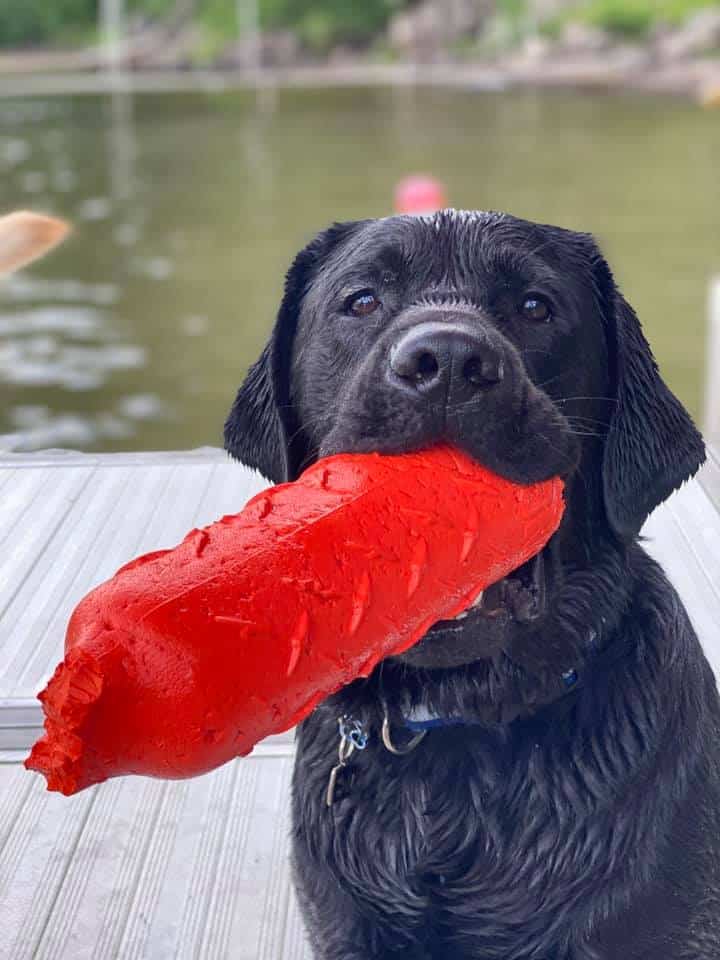
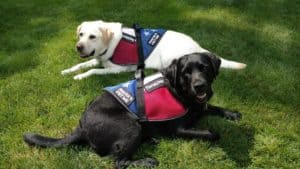
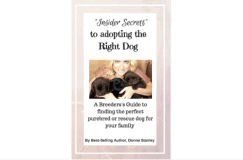

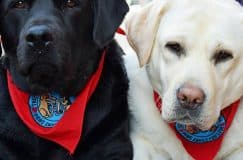
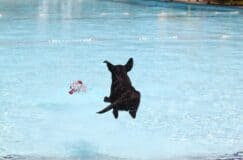
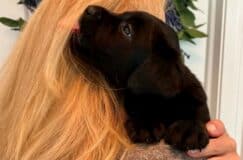
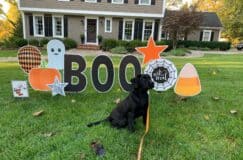
4 Comments